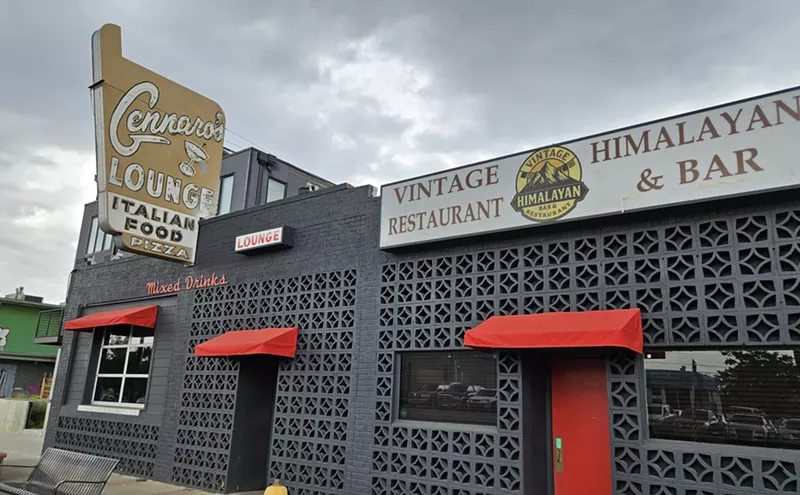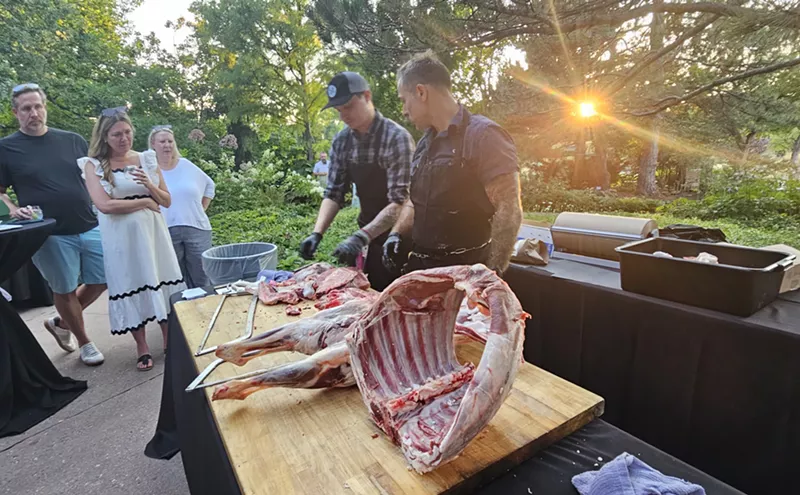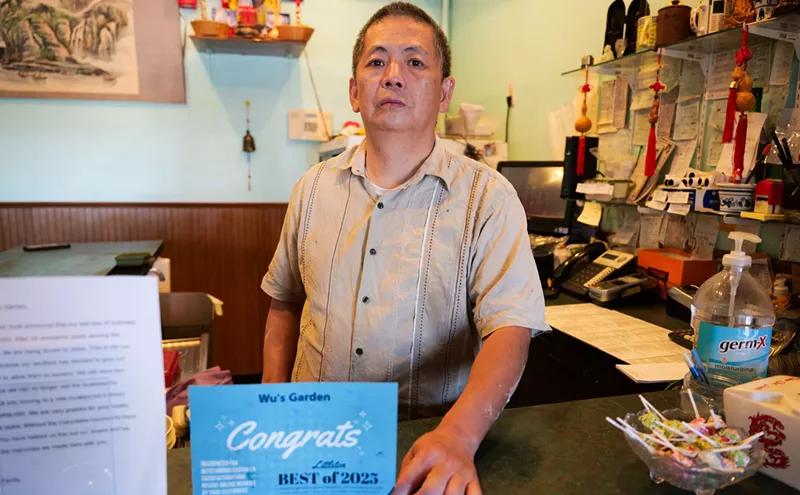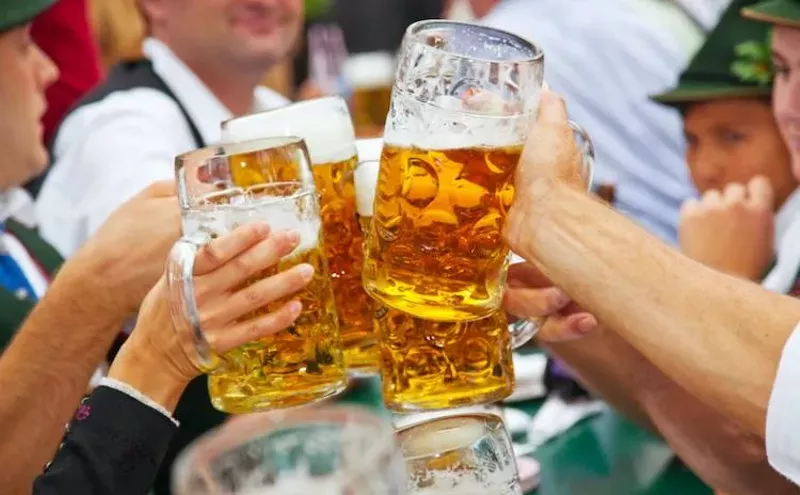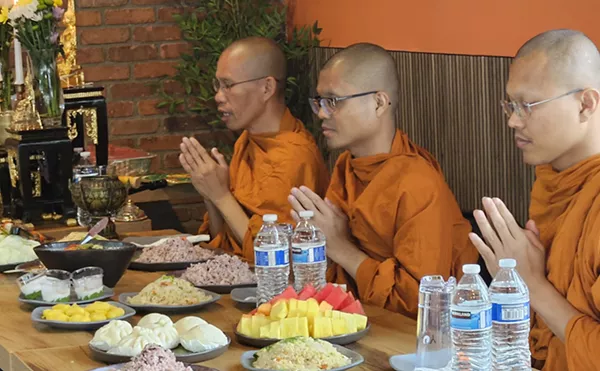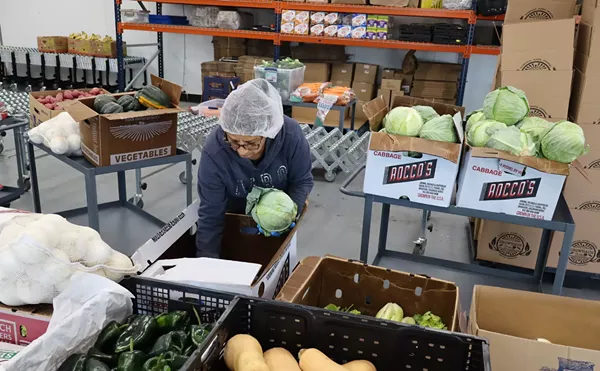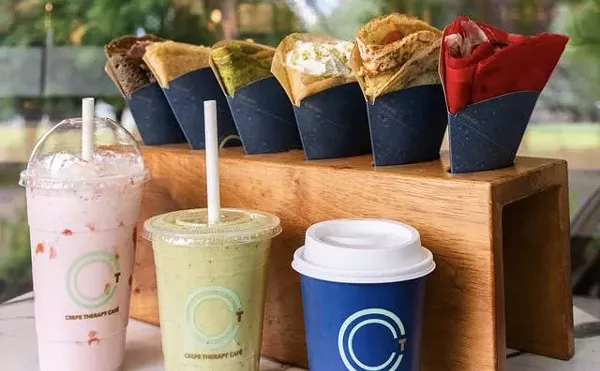I thought Indigo was brilliant, if a little odd, fusing God-knows-what with what-the-fuck and creating a freak-ass, hyper-modern fusion cuisine almost alien in the synthesis. Before the space was Indigo, it was Papillon -- which was technically French, but really not. Papillon was la cuisine de Radek Cerny, which should get its own designation in the cookbooks and Cerny his own evolved nation-state status, because he doesn't do fusion so much as amalgams of potato-laden fantasy. At his worst, he shatters. At his best, he steals with the skill of the most excellent professionals, and does it so smoothly it looks (and tastes) like native genius.
Fusion cooking is one of those things -- like writing poetry or getting tattoos of cartoon characters -- that seems like a good idea, maybe even an important idea, when you're young. For chefs these days, it's almost a rite of passage. But like so many things, it becomes less attractive, seems less wise, the older you get and the longer you do it. Thus, Vega's Sean Yontz now consigns his wilder impulses to tasting dinners and special menus, focusing the Latino half of his talent at the Mexican restaurants under his care (Mezcal, Chama) and reserving the American/Continental influence for Sketch. Chef Duy Pham, who created that one best moment at Opal (which, come to think of it, occupies a space that once was home to another Radek Cerny enterprise, Radex) moved on long ago. He's done a lot of things since bailing out of Opal -- not all of them good or smart -- and is now an owner at Kyoto (7301 South Santa Fe Drive in Littleton), where he's getting weird in a whole new way. French technique, Asian flavors, Japanese influences, a multi-national crew. Pham's sous chef at Opal was Rebecca Weitzman, who's now exec'ing at one of the best restaurants in the city, Café Star (3201 East Colfax), which also happens to have one of the least fusion-y, most solidly built contemporary-American menus in the city. I guess the sunchoke foam was too much for her -- as well it should have been.
When Indigo was at its peak, it was run by executive chef Ian Kleinman and sous Ben Alandt. Alandt popped his chute early, heading for the Pacific Northwest (where I hear he's done quite well for himself). Kleinman hung on for the ride, staying long enough to cook at the restaurant that followed Indigo: Go Fish Grill. When that didn't work out, he signed on with the Sullivan Restaurant Group. When that didn't work out, he took a gig in Beverly Hills. And when that didn't work out, he came back to Denver: He's now in the kitchen at O's Steakhouse at the Westin Westminster. But that's not really such a strange move. Back in the mid-'90s, when fusion was being invented, one of its first, strangest Denver practitioners was Tyler Wiard, then exec at the Napa Café, at 2033 East Colfax Avenue. Wiard was in his twenties at the time, still fresh from his schooling under Cliff Young, and he freaked people out with his marinades, his shotgun weddings of international ingredients, his crusts. Over the next decade -- with stints as exec at both the very staid Fourth Story and the semi-staid Mel's -- Wiard cooled out. And now he, too, has gone the steakhouse route: running the line at Elway's (see Second Helping, page 61).
But it's not like Denver's fusion impulse has died: Something as generally ill-conceived and tantalizingly stupid as fusion cuisine will never go entirely away. Even now, it's being done in many forms across the city. Cowbobas, the Vietnamese/cowboy steakhouse and boba tea restaurant reviewed this week, is an example of fusion-for-a-cause -- that cause being to feed a fused neighborhood. Zengo, international restaurateur Richard Sandoval's Mexi-Asian restaurant/nightclub on Little Raven Street, is one of those rare survivors of the fusion explosion, a restaurant that occasionally defines the impulse itself. It's well-intentioned, wildly original, sometimes brilliant -- and sometimes not even smart. Sandoval's first Denver restaurant was the straight-ahead, white-cloth Mexican Tamayo, still going strong in Larimer Square; he's just added La Sandia at 8340 East 49th Avenue in Stapleton, which is not fusion at all, just Mexican with a nouvelle twist.
And there's more to come. The about-to-open L'Asie Fusion Bistro at 603 East Sixth Avenue is as fusion as it gets, with the word right in its name. Here the trick will be French/Asian with history, a remaking of traditional cuisine along modern lines, a taste of all the cuisines the French touched during their adventures through Asia. Topping that for two cuisines you never thought would merge is O'Shea's Taverna, a new Greek-Irish "Euro-pub" at 5117 South Yosemite in Greenwood Village. Saganaki and boiled bacon, Guinness and ouzo, lamb-and-chips. I can't wait.
In the meantime, it looks like Cerny might be coming back to town. After Papillon closed more than four years ago, he concentrated his efforts on Le Chantecler in Niwot (which is no longer under his control) and the often startlingly good L'Atelier in Boulder (which is), where he refined his gimmick and looked for another house in Denver. Every couple of months, I'd hear that he was about to make a deal. And last week, when I called to check in -- after having my ear tickled by a couple of chefs who claimed that Cerny had finally made his move -- I found that while he still hasn't signed the papers, he does have a space in mind, in the hot Highland neighborhood. In fact, he's in negotiations with the owner right now.
Radek can't talk much about the new spot, though, so we chatted for twenty minutes about everything but. He'd just returned from New York, where he visited with Jean-Georges Vongerichten, checked in with Gordon Ramsey and hung out with serious industry lifers and heavyweights at the Spotted Pig in the West Village -- a scary dive of a place, according to Cerny, but one opened by (among other people) Mario Batali. There's no one in town (except maybe Mel and Jane Master) who can drop names like Radek. And one of the reasons that Cerny's food at L'Atelier is so good, so innovative and so smart (beside the fact that he cooked alongside some of the greats, like Verge and Bocuse, and hangs out in Spain with Ferran Adria) is precisely because he parties with people like this when he's out of town. If you're going to bounce menu ideas off someone, you could do worse than Vongerichten.
Cerny talked a lot about Vongerichten and the lessons that restaurateur has learned from owning eighteen restaurants -- "with no debt!" Cerny marveled. He talked about how he's finally taught himself to be careful after closing so many of his own. And now he's getting ready to open another one.
I just hope it's worth the wait.
Leftovers: Last week I also talked with Phil Morse, who recently took over the Java Jay's coffee hut from Jay Kenney. In order to drum up a little more lunch business, Morse had been looking for something new to serve his caffeine junkies. And what he hit on was the runza (aka "krautburger," aka "bierock"), which is what you might get if you crossed a hamburger with a dumpling in Germany -- a yeasted-dough bread pocket filled with ground beef, cabbage or sauerkraut, onions and a variety of spices, then sealed, baked and served.
Later that afternoon, I got an e-mail from David Trujillo, informing me that his wife, Robin "Lauer" Trujillo, just opened a new sandwich shop at 26 South 6th Street in Brighton called Lauer-Krauts. And what's she featuring? Krautburgers.
Weird.
While we were talking about runza, Morse had asked if I knew anywhere in Colorado you could find pasties -- the portable, pastry-wrapped meat pies popular in Michigan's Upper Peninsula. Pasties originally came out of England and made their way to the Midwest, but any attempt to pioneer pasties in Denver has never gone far. Yet. After the odd coincidence of a double-runza day, though, I fully expect to hear of a fusion pastie/pastry shop, bakery and (no doubt) sushi bar opening any day now. Probably in Highland, and owned by Pham and Cerny with Wiard cooking and Jean-Georges writing menus.



